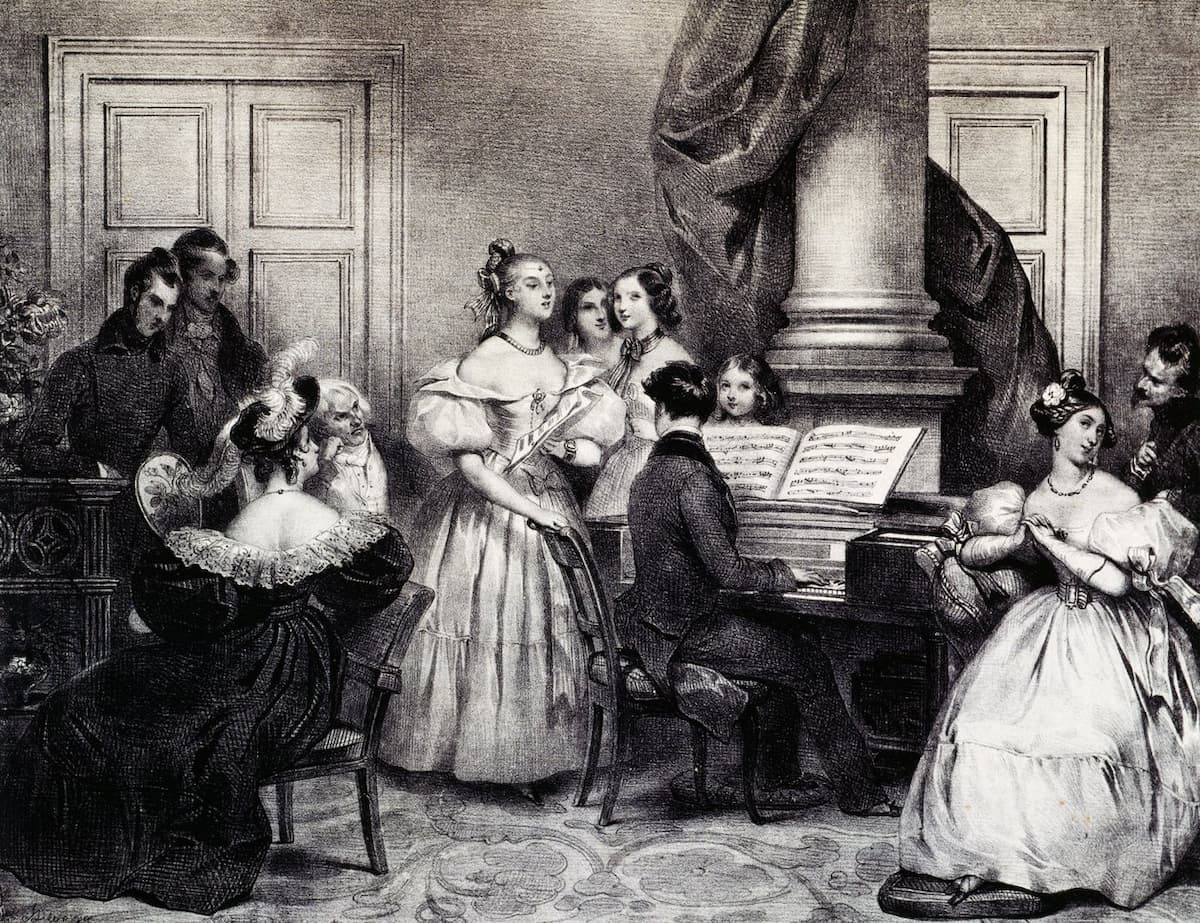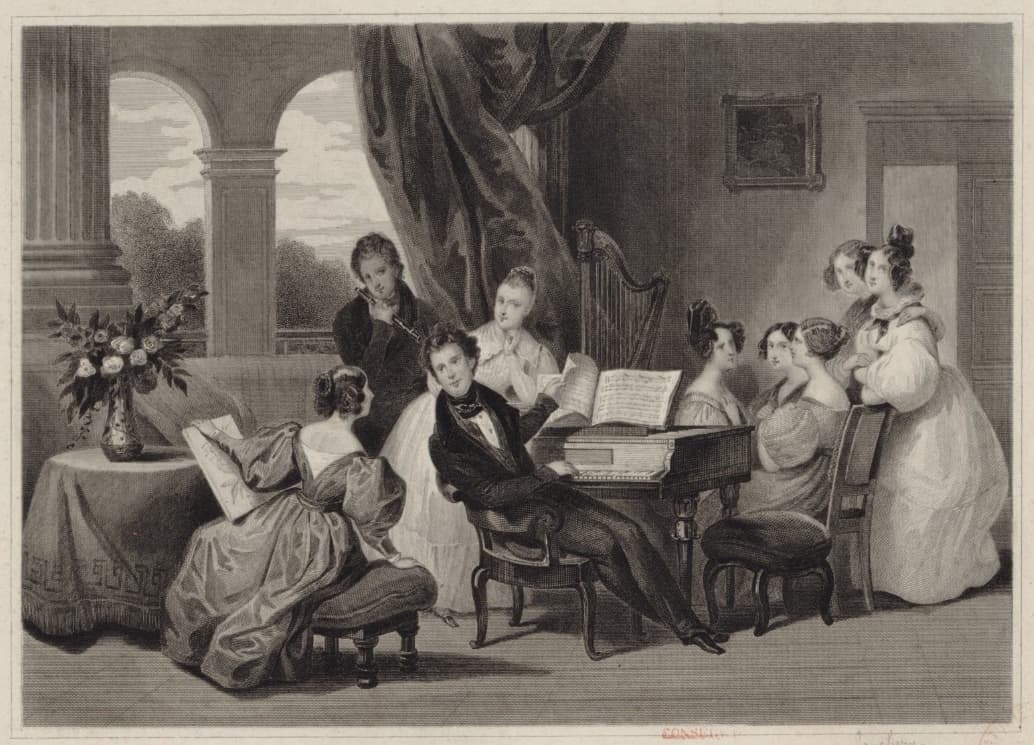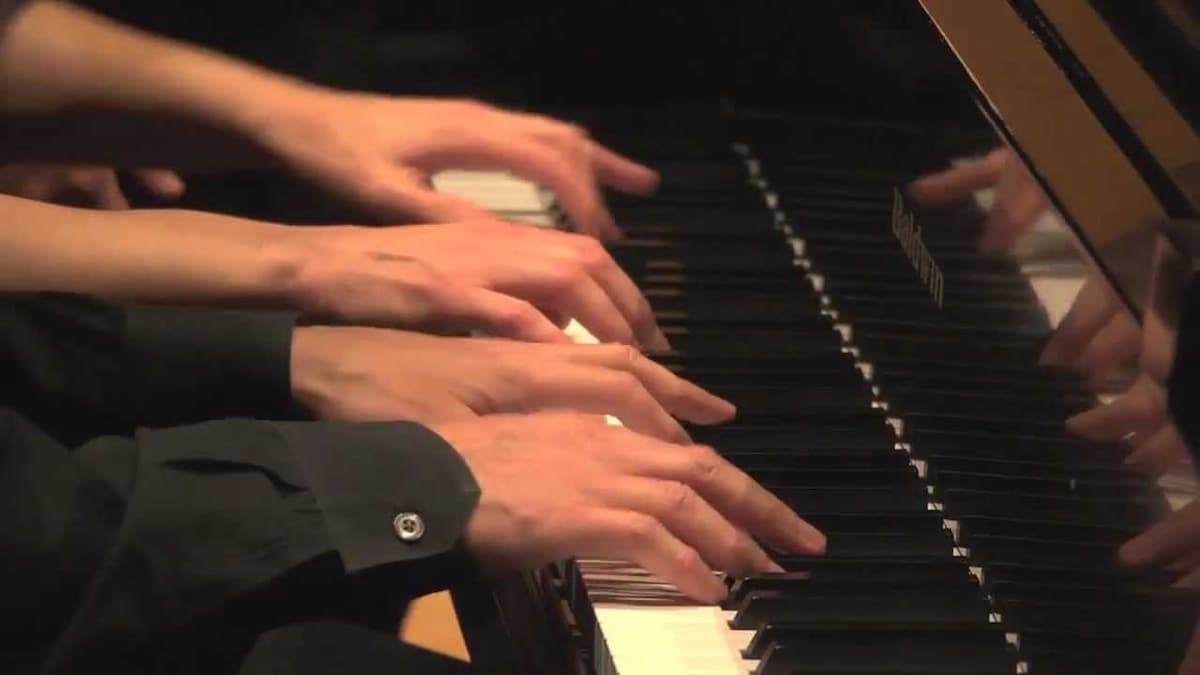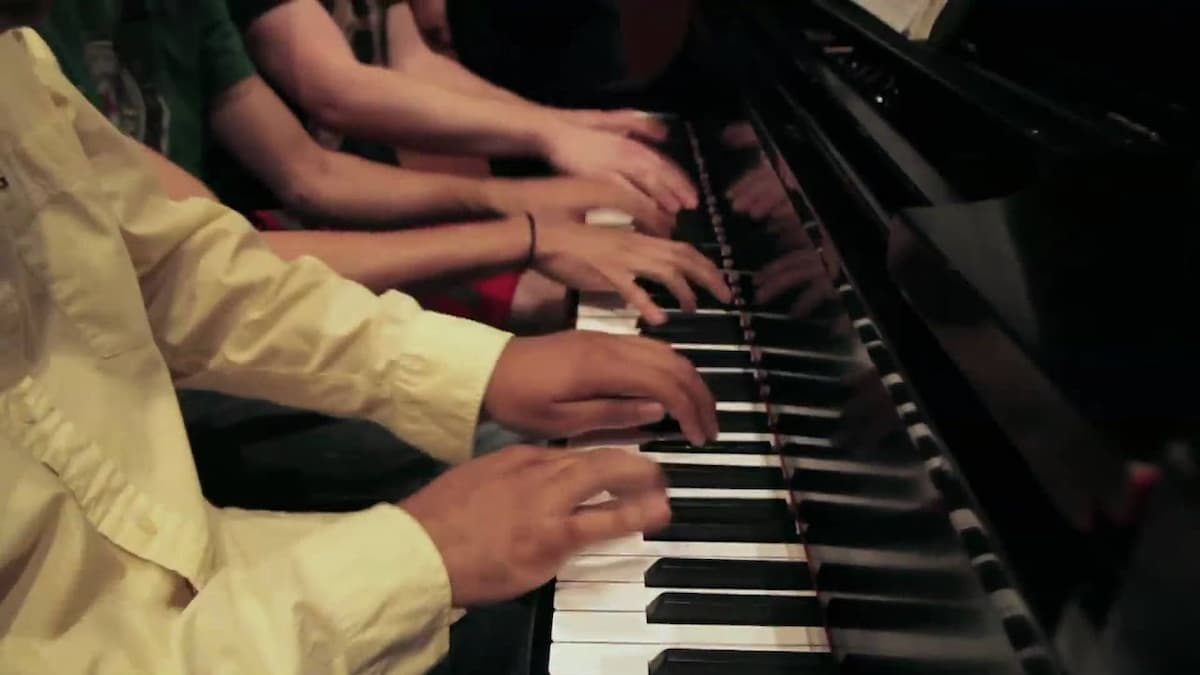With the rise of the home piano in the 19th century, there was an enormous demand for piano music both for the home and for the concert hall. Just as today, when we love to hear the Boston Pops play, for example, music from the movies, amateur pianists (and experts) loved playing themes from well-known operas.

Achille Deveria: Family concert with piano
Robert B. Sherman: Mary Poppins: A Spoonful Of Sugar – Jolly Holiday – Feed The Birds – Stay Awake – Supercalifragilisticexpialidocious (arr. R. Hayman for orchestra) (arr. R. Hayman for orchestra) (Boston Pops Orchestra; Arthur Fiedler, cond.)
But, lacking one’s own orchestra at home, luckily, there was the piano. Composers of all kinds either arranged their own music or others did it for them – usually for piano, but also for piano and a solo instrument, such as in Pablo de Sarasate’s Carmen Fantasy for violin and piano. The violin takes the leading role, while the piano is simply accompaniment.

Devéria: Henri Herz au piano dans un salon, 1830 (Gallica, ark:/12148/btv1b84271553)
Pablo de Sarasate: Carmen Fantasy, Op. 25 (after G. Bizet) – Allegro moderato – Moderato (Zhou Qian, violin; Ning Du, piano)
The themes are picked up, played out, and then decorated as befits the solo instrument.
For particularly well-known arias, a variation set might be made, such as Chopin did with the duet for Don Giovanni and Zerlina, ‘Là ci darem la mano’, from Mozart’s Don Giovanni.
Frédéric Chopin: Variations on La ci darem from Mozart’s Don Giovanni, Op. 2 (version for piano) – Alla polacca (Louis Lortie, piano)
Virtuoso pianist Sigismond Thalberg was one of Franz Liszt’s rivals on the concert stage, although their reported disputes were more a journalistic legend than a reality. Liszt included Thalberg’s opera fantasies in his concert repertoire (although he had once publicly disparaged them).
Sigismond Thalberg: Grande fantasie de concert sur l’opéra La traviata de Verdi, Op. 78 (Francesco Nicolosi, piano)
And then, if you had a really brilliant piece of opera writing, let’s bring it home, such as Carl Tausig’s arrangement of Wagner’s The Ride of the Valkyries for piano.
Richard Wagner: Die Walküre – Act III: Ride of the Valkyries (arr. C. Tausig) (Matti Raekallio, piano)
And, if you could get your sister or brother to help, you could play some of the four-hand arrangements.

Piano 4-hands
Johann Strauss II: Die Fledermaus: Overture (arr. for piano 4 hands) (Duo Porto-Frontini)
Get both of your siblings to help and you get works for piano six-hands.

Piano 6-hands
Léo Delibes: Sylvia: Pizzicato polka (arr. B. Leuthereau for piano 6 hands) (Trio Pianistico di Bologna)
This wasn’t just a 19th-century genre; it also extended to 20th-century music, such as this concert fantasy on themes from Gershwin’s Porgy and Bess.
Igor Frolov: Concert Fantasy on Themes from Gershwin’s Porgy and Bess, Op. 19 (Nicolas Koeckert, violin; Kristina Miller, piano)
We’ll close with a bit more from Carmen.
Moritz Moszkowski: Chanson bohème de l’opera Carmen de Bizet (Michael Ponti, piano)
Clearly, some of these were far beyond the home pianist or violin and piano pair, but, at the same time, it gave music that would have normally been confined only to the opera stage a wider venue. Sometimes, there’s nothing quite as fun as bellowing your way through The Magic Flute (I won’t say singing!) or chomping through the piano fantasies, picking out the melodies, and pretending one is an undiscovered Liszt or Thalberg.
For more of the best in classical music, sign up for our E-Newsletter

